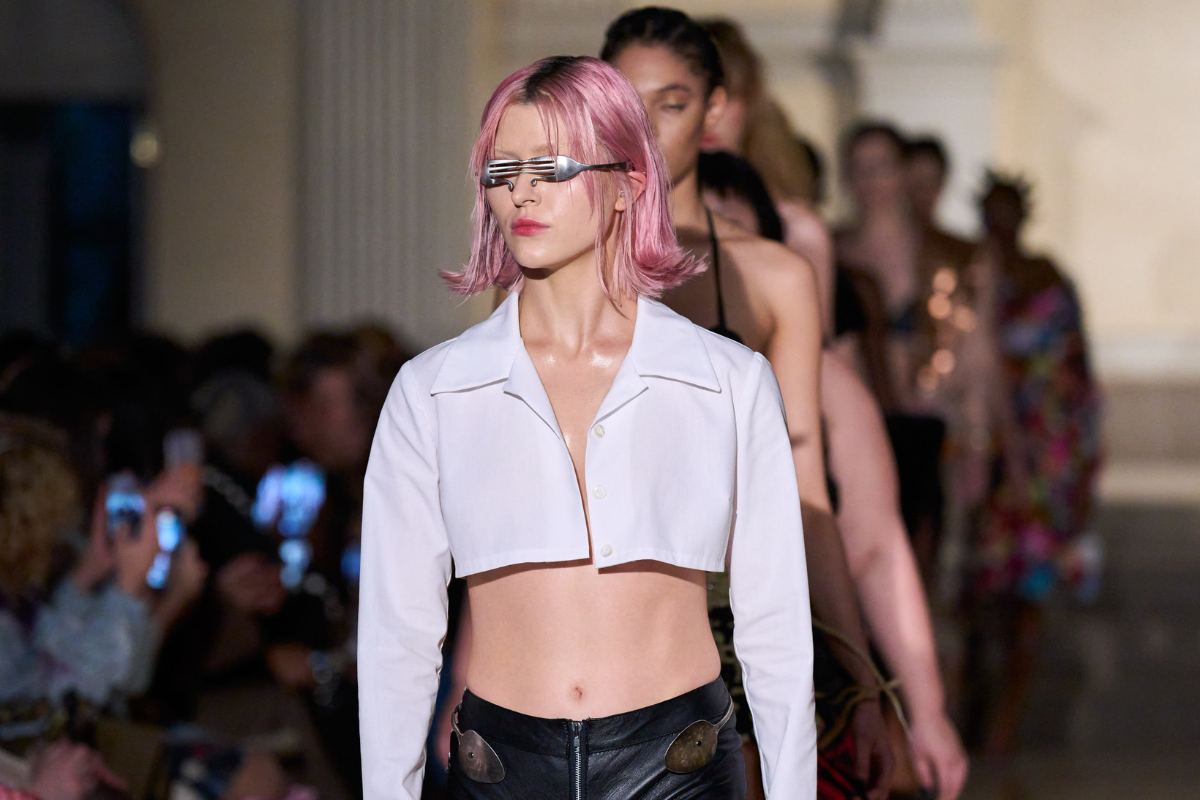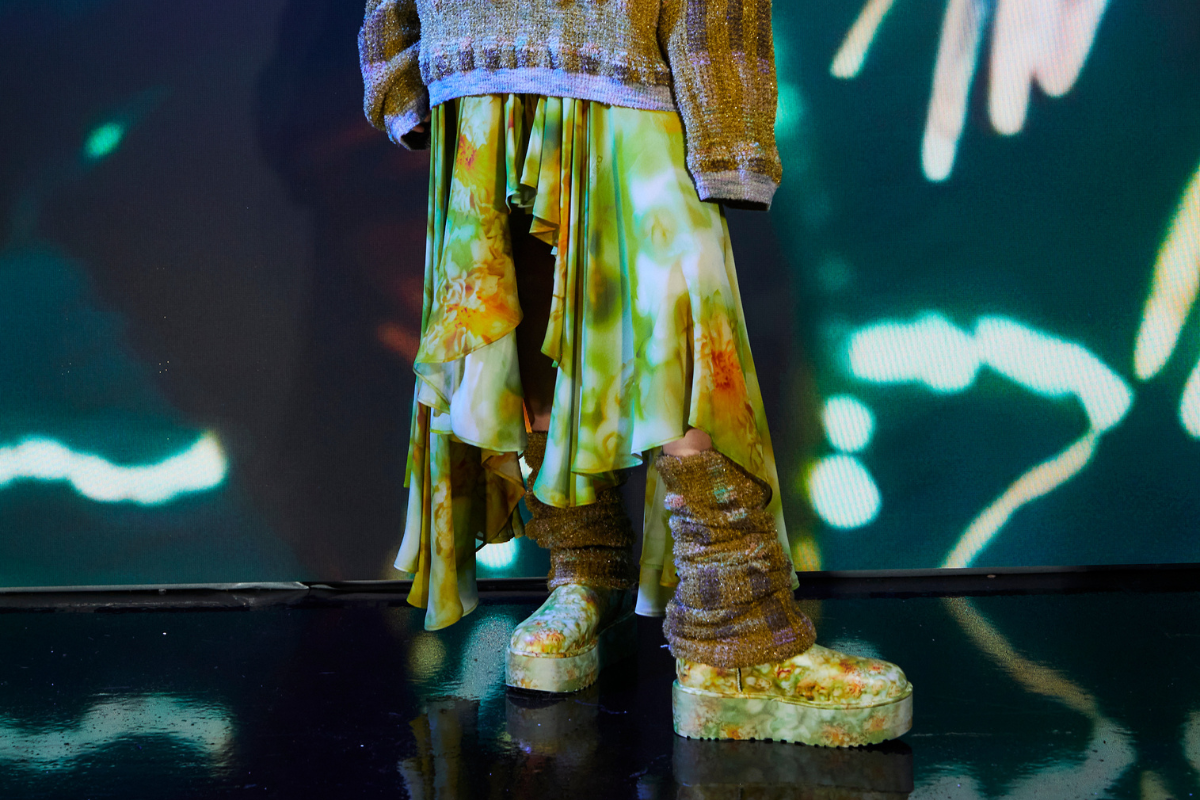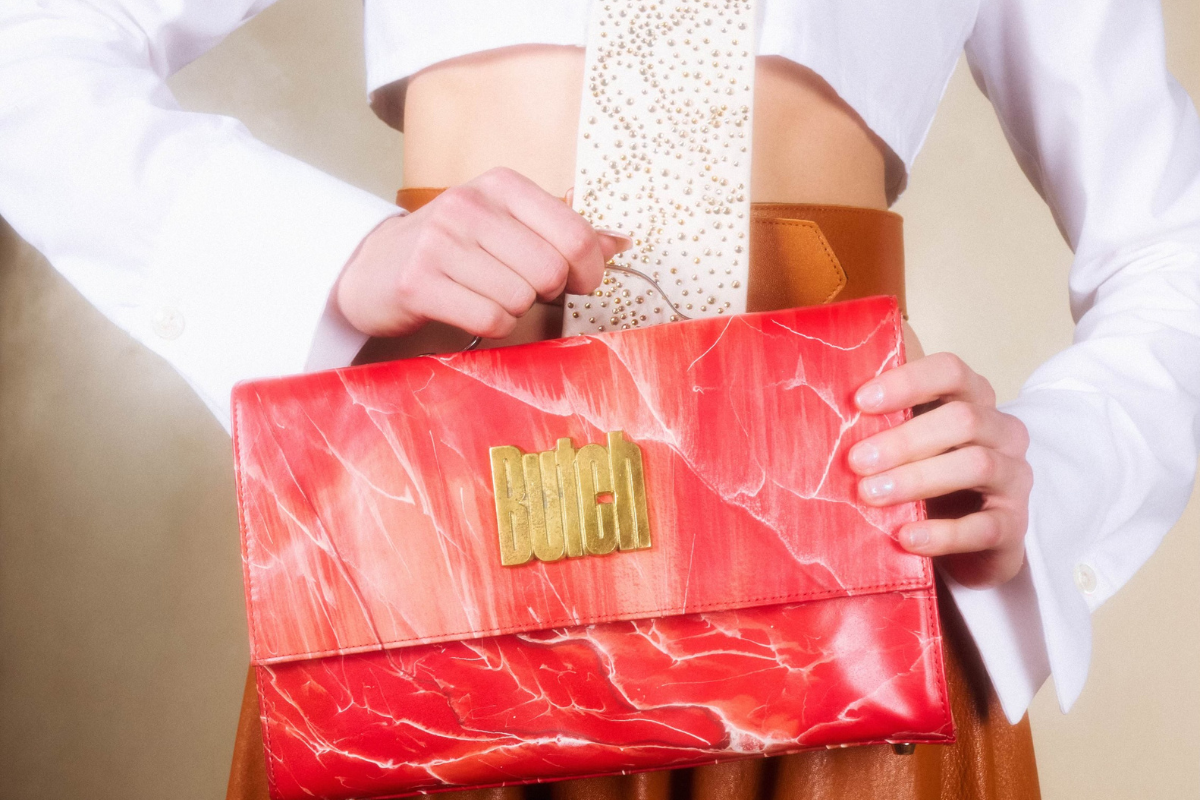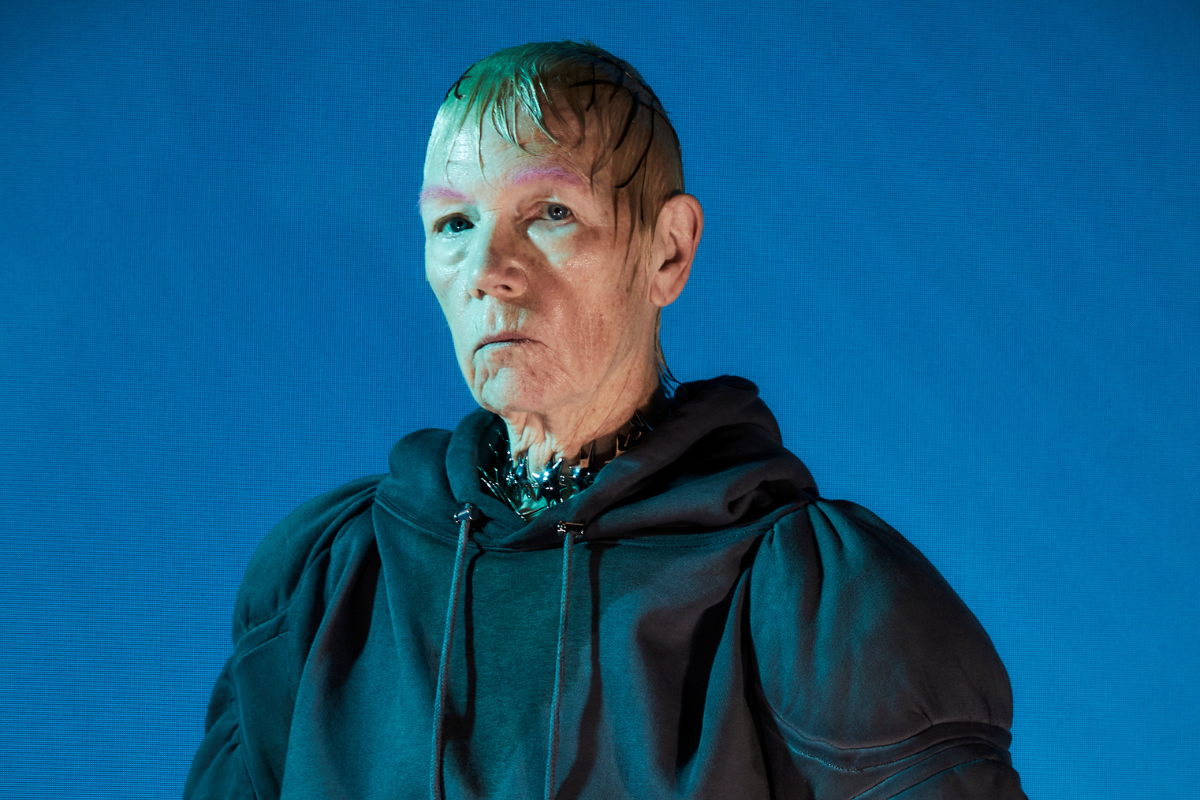The twice-yearly women’s fashion week circus is underway. Editors, buyers, celebrities, influencers and countless other industry insiders and representatives flit between the big four fashion capitals – New York, London, Milan and Paris – to see what new ideas brands have to offer.
There will be new silhouettes, some contenders for the new ‘It Bag’ and showstopping feats of design, but can the industry come through on sustainability?

Big Promises
It’s been four years since a wholesale fashion week reset was promised. In 2020, as the COVID-19 pandemic took hold, representatives from fashion giants including Chloé, Missoni, Dries Van Noten and Gucci signed an open letter to the fashion industry, pledging to increase sustainability throughout the supply chain and sales calendar via actions such as making fewer unnecessary products and reviewing and adapting fashion shows.
At the same time, the Council of Fashion Designers of America published a report in which it promised to review New York Fashion Week to create positive, sustainable change. Meanwhile, the British Fashion Council (BFC) encouraged brands to slow down and focus on sustainability. But has this transformation materialized?
At the time of writing, the fashion cohort has just touched down in Milan, having taken in New York then London. Consideration of alternative fashion show formats has been largely forgotten as brands with budgets continue to stage extravagant shows with top tier production values, so hope lies with the content of the shows.
“I truly believe that sustainability change in fashion has to come from the designer.” – Uyen Tran
If you know where to look, you can unearth some positive shifts. In New York, brands such as Lou Dallas, 3.1 Phillip Lim and Coach made use of deadstock and upcycled material.
Coach, which doubled down on sustainability efforts after it was criticized for destroying unsold merchandise, made denim pieces from thrifted jeans and spliced up aviator jackets to make cozy coats.
“That sense of creating, designing with relevance and responsibility, and a certain sense of urgency – that’s where my head is,” Coach Creative Director Stuart Vevers told Vogue.
In London, upcycling was also on the agenda. Conner Ives, known for his knack for creating desirable pieces from old T-shirts, supplemented his go-to jersey staple with military surplus materials, antique wall tapestries and embroidery crafted from unused headphone cables sourced from an electronics factory.
Susan Fang crocheted knee-high boots using offcuts from previous seasons as yarn; up-and-comer Tolu Coker’s first London show featured upcycled materials and reworked Ugg boots; and Patrick McDowell even reused broken instruments to make a tuba corset, a cymbal dress and a cello corset as part of his collection made in collaboration with the Guildhall School of Music and Drama.

New Materials on the Menu
It’s vital that the fashion industry make use of the millions of metric tons of material and discarded clothing that already exists, but it’s hard to productionize upcycling, so brands must seek out innovative materials that have the potential to scale.
Gabriela Hearst, who put sustainability firmly on the agenda during her time as Creative Director of Chloé (a role she left last year), sent recycled cotton and hemp ‘denim’ and woven cashmere ‘fur’ down a runway made from salvaged materials, while Collina Strada – another brand known for its commitment to sustainability – debuted Uggs made from a corn by-product.
In 2023, Dauphinette pledged to make all forthcoming collections out of at least 50 percent upcycled materials. But alongside using deadstock cashmere, unsold stock from The RealReal, upcycled leather and vintage kimono silks for its kitsch-luxe AW24 collection, it debuted two ‘prosciutto leather’ bags made by TômTex.
The biodegradable, plastic-free material is made from chitosan – the second most abundant biopolymer after cellulose, which can be extracted from crustacean shells, insects and fungi.
“It’s all naturally derived. And that is the key principle when we invent any new material – that there’s no plastic or toxic chemicals,” says Uyen Tran, CEO and Founder of the company.

A Space to Spark Change
TômTex, founded in 2020, is aiming to increase annual production capacity to 27,900 square meters this year but can’t yet produce the bags on a commercial scale, which is why it’s important to have such materials on the runway.
Brands can showcase novel innovations and create demand. Putting TômTex on the runway means it can reach an audience of millions.
“I truly believe that sustainability change in fashion has to come from the designer,” Tran says. “Sustainable material is looked at as being not sexy. You need to make it desired.”
Just as designers wield the power to persuade their audience to covet an outlandish new silhouette or an utterly impractical shoe, they have the capacity to make sustainability a must-have. Yet, while some great innovations are filtering through, the efforts are piecemeal and applied according to the will of each designer.
A truly unified effort is sorely lacking, as many designers appear to consider sustainability to be too risky or difficult, and fashion councils fail to formalize their pandemic-era promises. But it can be done.
In 2023, Copenhagen Fashion Week set minimum sustainability requirements. If a brand doesn’t tackle factors such as using preferred materials, supply chain due diligence, zero waste show production and consumer sustainability education, it’s not allowed to show.
“Fashion Week has got a really significant role to showcase and lead on sustainability.” – Patsy Perry
London Fashion Week has mirrored the strategy and applied it to emerging BFC NEWGEN designers, but not all designers on its schedule, the larger of whom have the budget and capacity to make huge structural changes.
“Fashion Week has got a really significant role to showcase and lead on sustainability,” says Patsy Perry, Reader in Fashion Marketing at Manchester Metropolitan University. “There is an opportunity for positive storytelling, to make it exciting, but there are no real requirements.”
The lack of requirements means brands can remain cagey about what their sustainability efforts really are. In 2023, Vogue Business asked 231 brands to share the main materials used in their SS24 collections and only 19 responded, most of whom were independent designers who tend to lead the way in sustainability across the board, according to data from Good On You.
To find more meaningful sustainability commitments, Perry says, we might need to look elsewhere, toward the brands that avoid the frenzy of fashion week, which has transformed from an industry event for buyers to a media spectacle that drives consumption.
Until the industry reaches a consensus and commits to placing the same importance on sustainability as design and commerciality, it will continue to fall short at fashion week, save the few dedicated designers pushing the needle.
“Sustainability is not a selling point, it’s a must,” Tran concludes.







